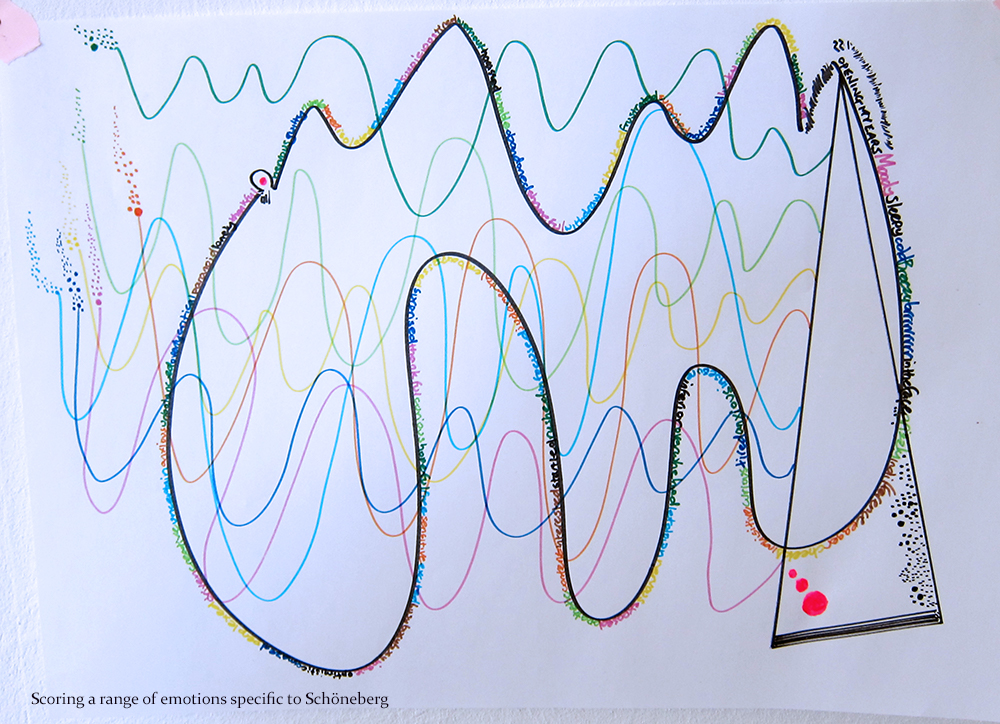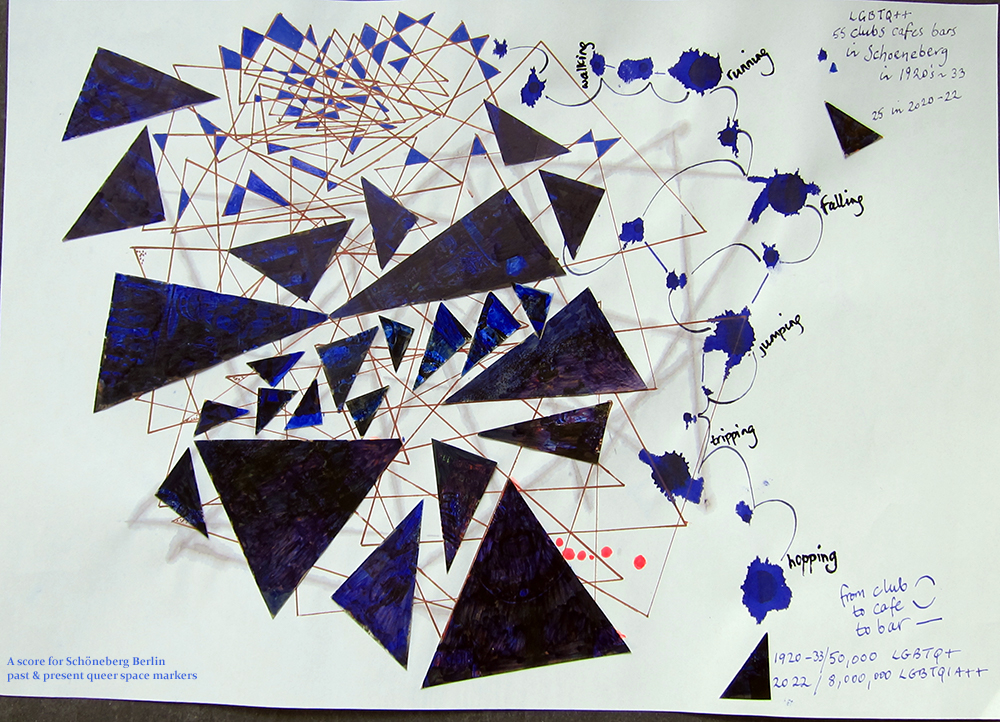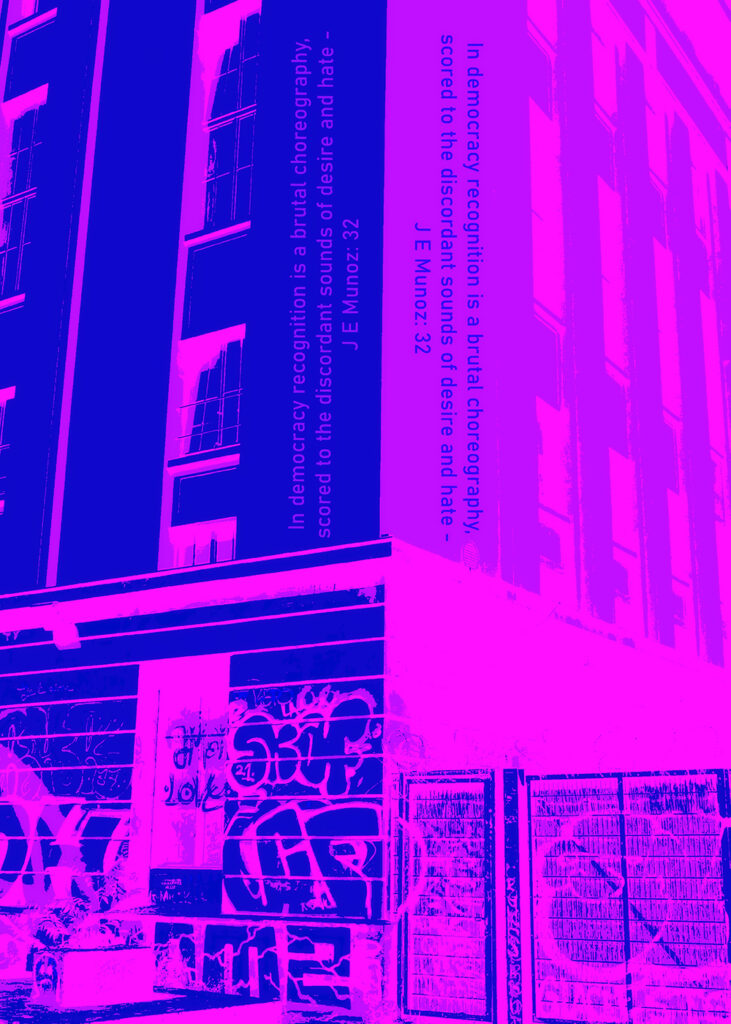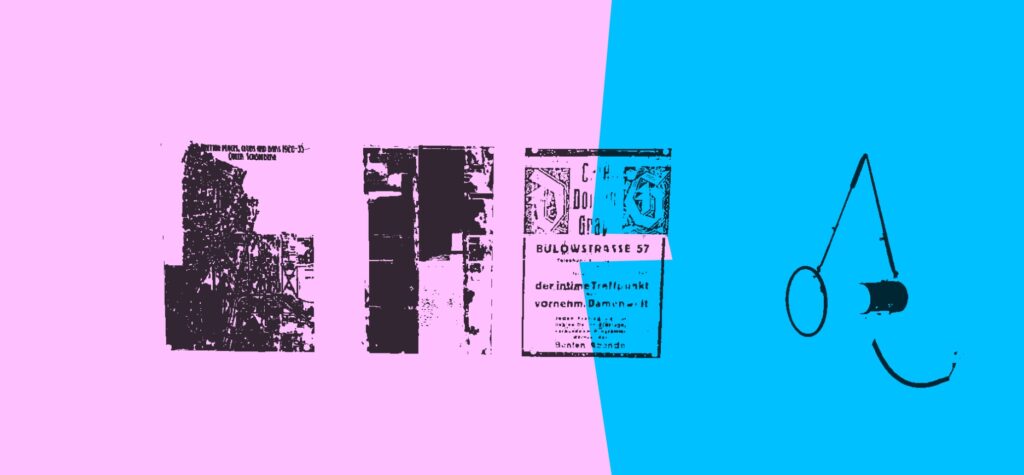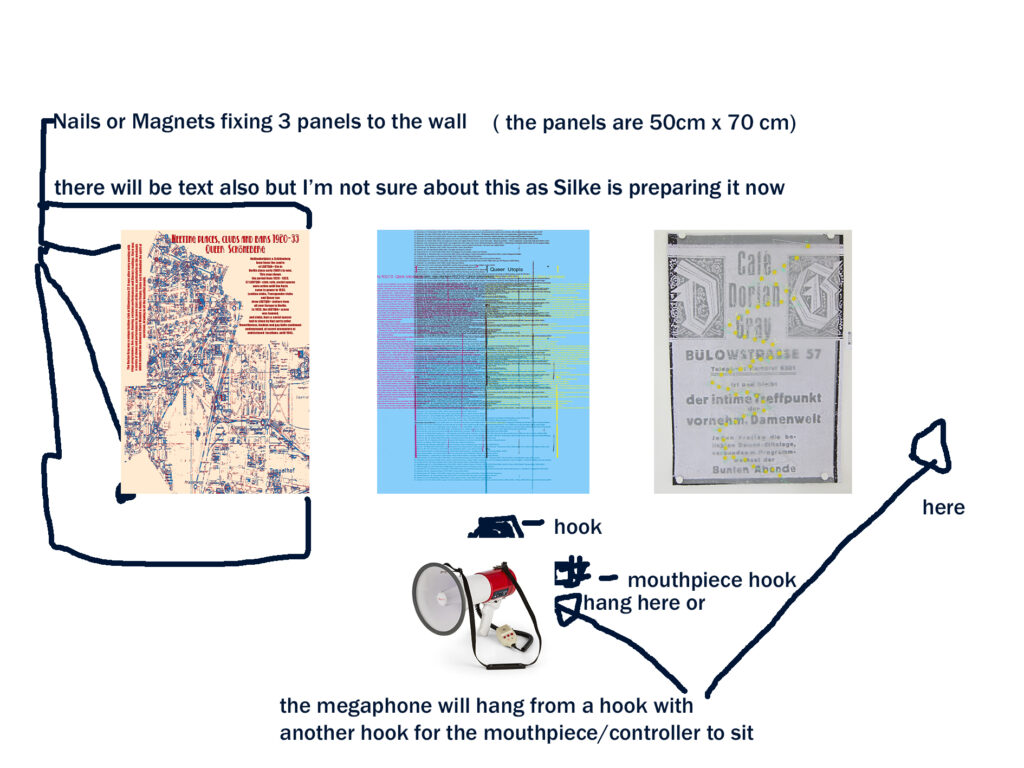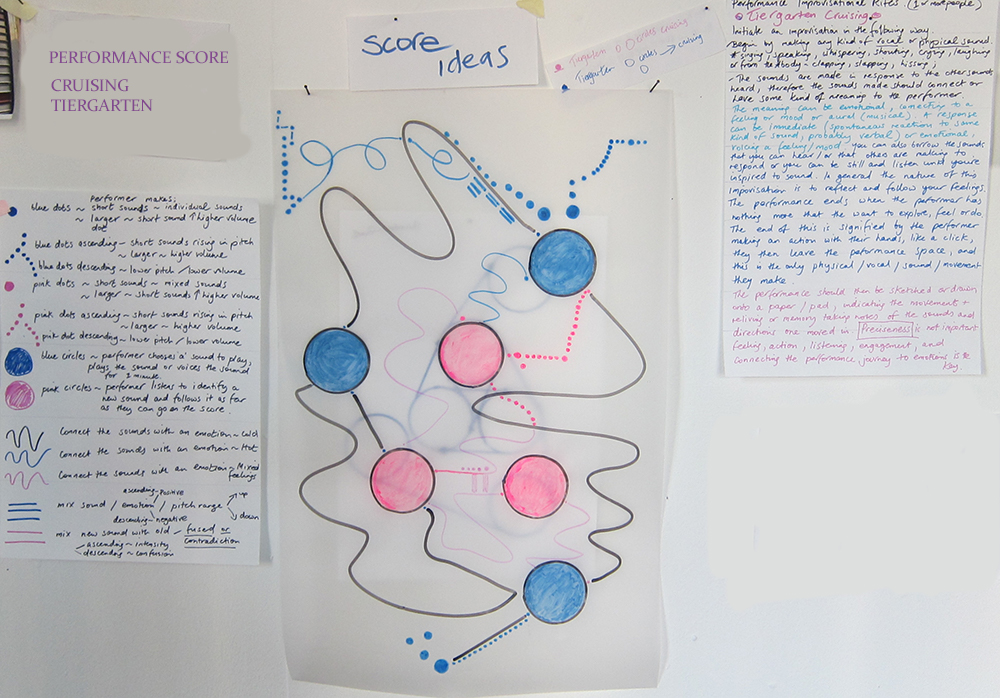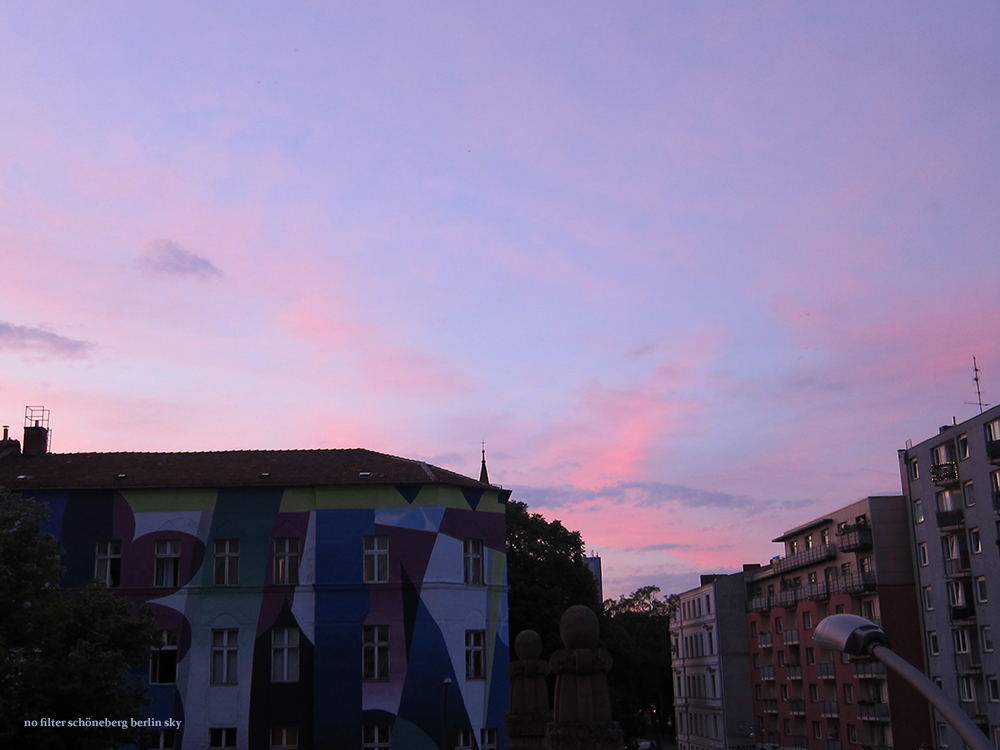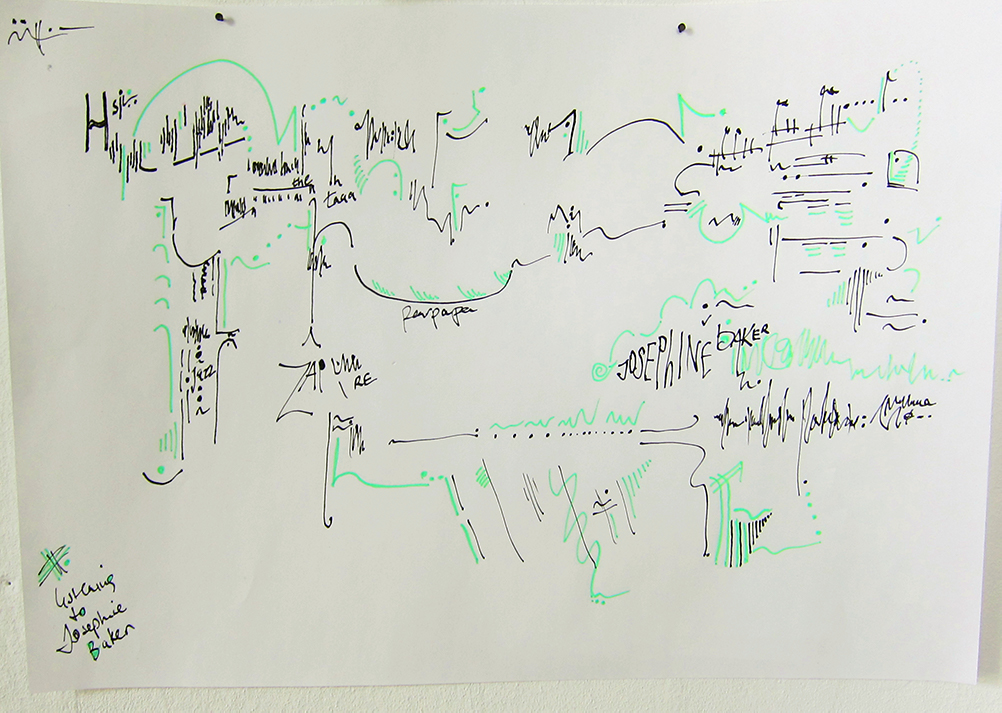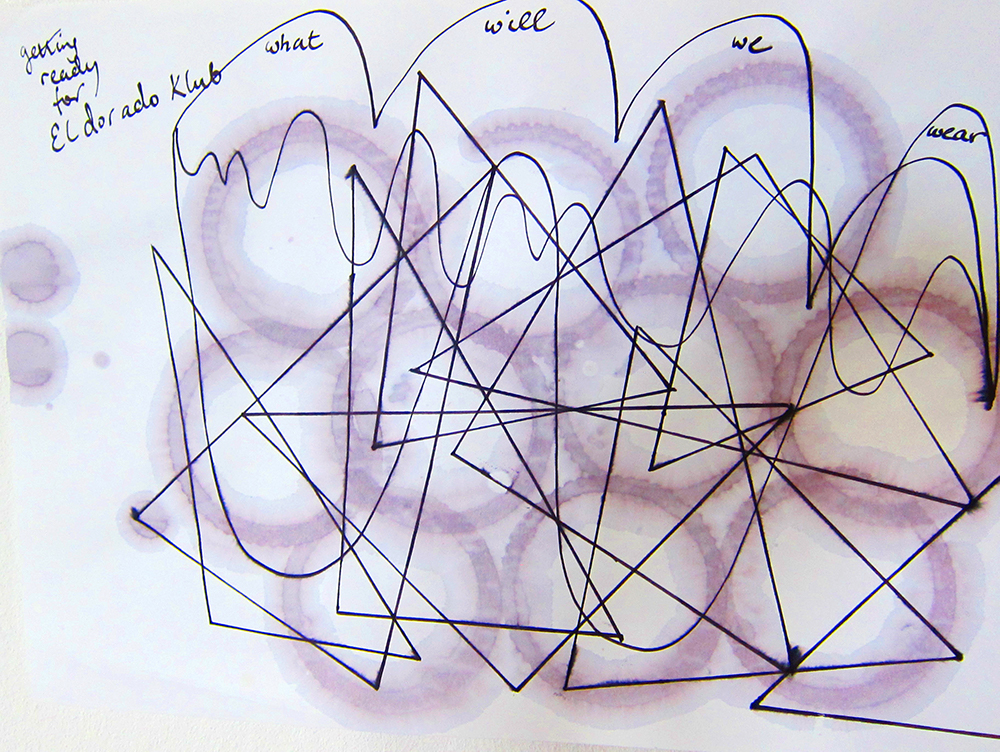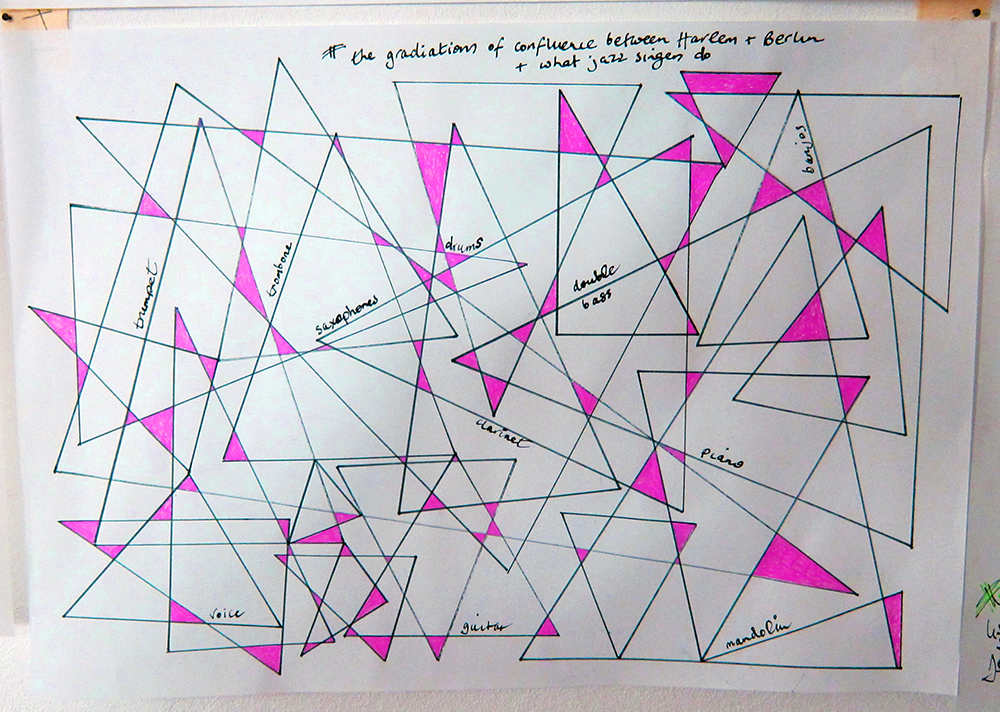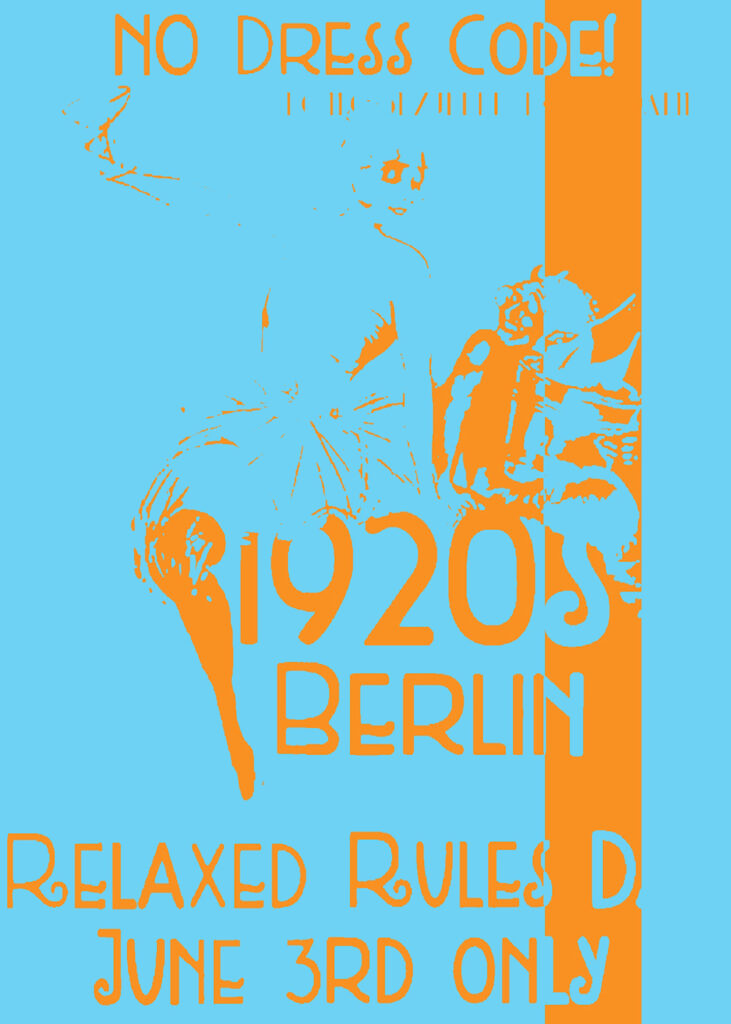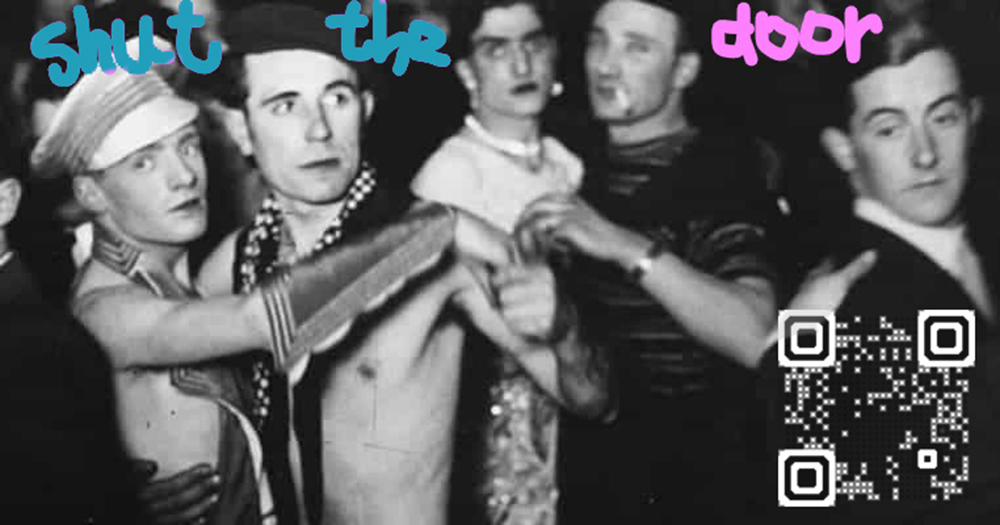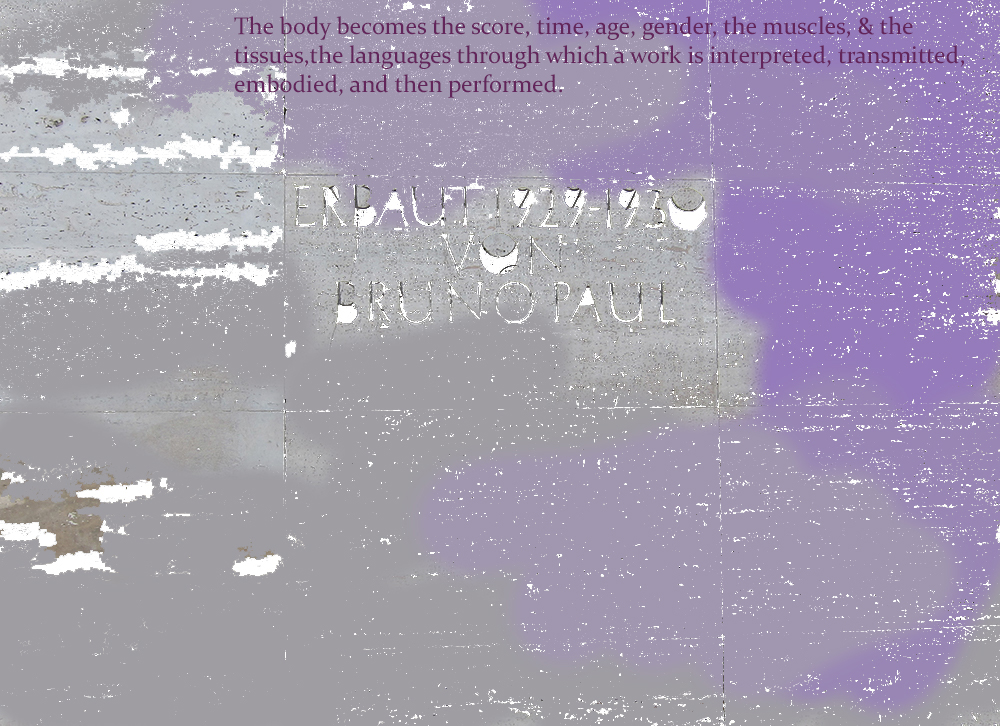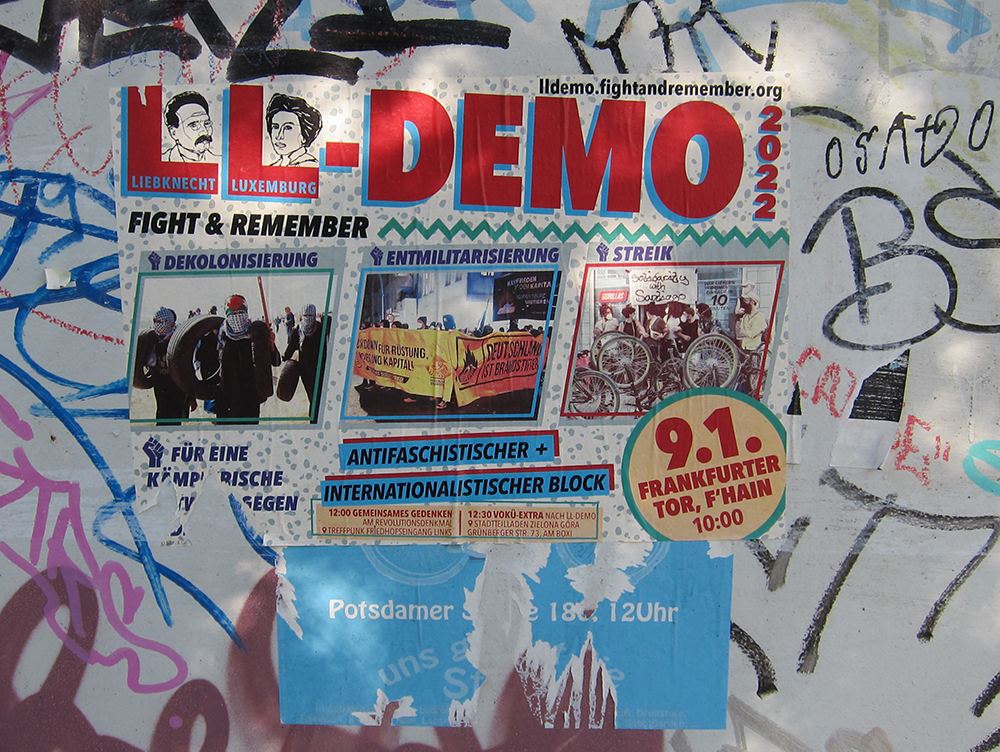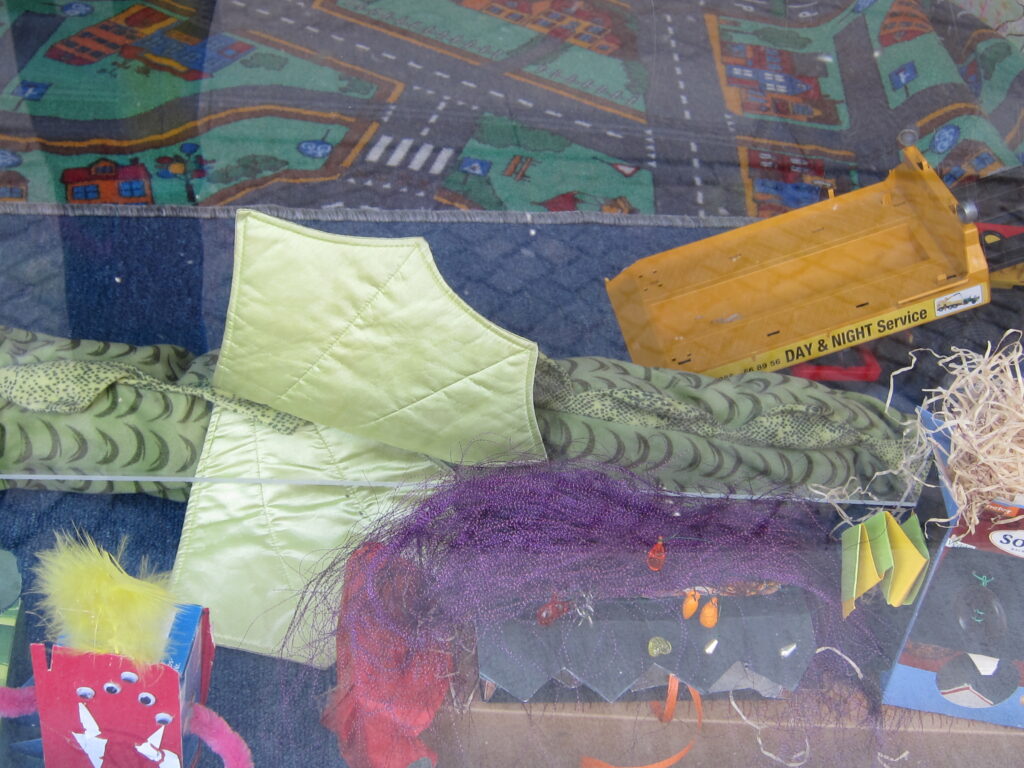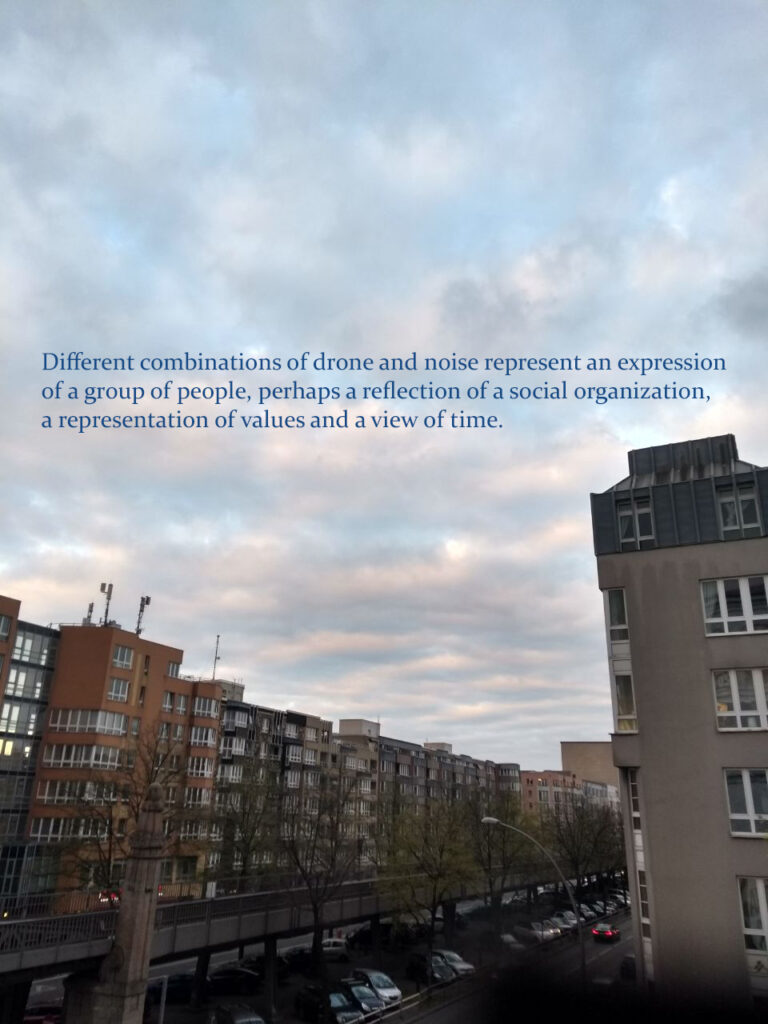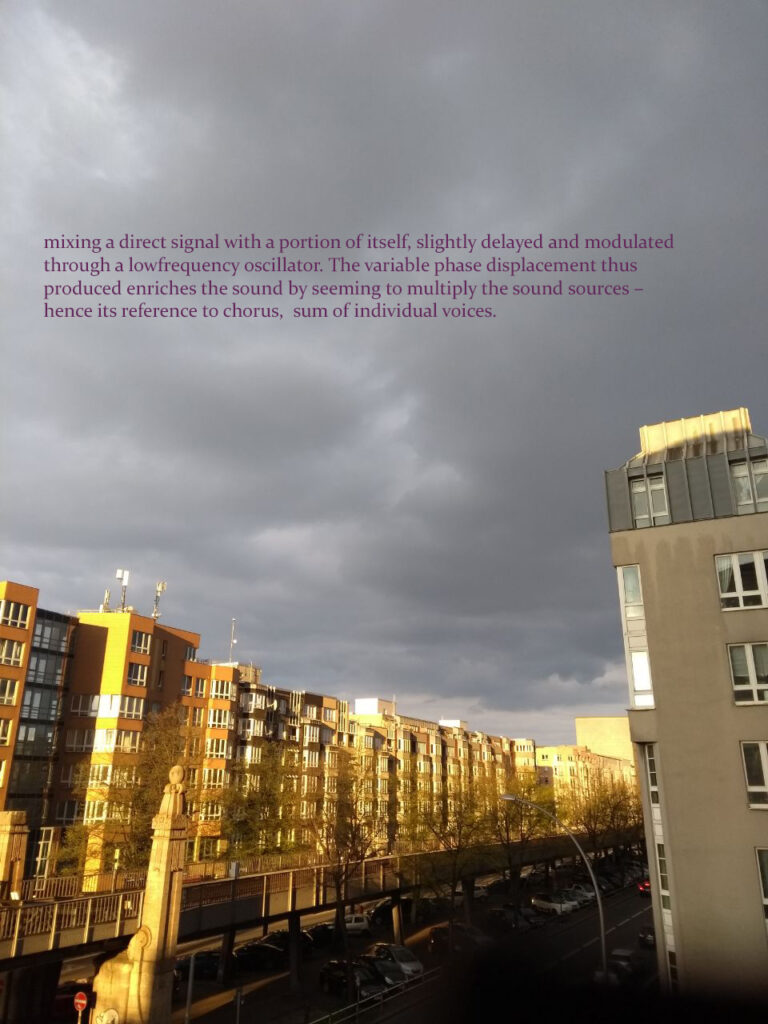visual diary
Olala weimar
Johnny Pavlatos explores the queer Schöneberg of the Weimar Republic. Around Nollendorfplatz and in Motzstraße, a long gay, lesbian and queer history can be discovered through the cafés, bars, nightclubs as well as the venues of artistic performances. The term "Regenbogenkiez" (rainbow neighbourhood) is still firmly established today. There were many well-known and lesser-known meeting places in the 20s. In the Nationalhof at Bülowstaße 37, for example, balls for cross-dressers were celebrated during the Weimar Republic. Various clubs met here, such as the ladies' club "Violette", and regular events were held for a queer audience. The "Dorian Gray" at Bülowstraße 57 was an English-speaking meeting place for elegant women and the "Hollandais" at Bülowstraße 69 was a queer dance café under the U-Bahn arches. The travesty shows at "Eldorado" in Motzstraße were known far beyond Berlin and were described by numerous writers. The abrupt and violent end of this queer diversity after the handover of power to the National Socialists in 1933 is representative of the end of a cultural scene that had created spaces and opportunities for the self-expression of minorities.
Pavlatos' approach was to locate historically important places of queer people and to enable new access to these places. Pavlatos collected nearly 60 locations, including their owners and types of events. In a second step, Pavlatos collected impressions of the historical places as well as information in texts and images, which were then translated into a composition. Pavlatos explores the gender identities and social utopias lived in these places by combining historical material with sounds. With this self-developed method, Pavlatos transferred feelings of work and love, suffering and joy, for example, into sounds. As well as the way bodies moved in these places, how colours and fabrics determined the spaces. Pavlatos calls the process of arranging emotions and forms to create a score a post-phenomenological method. Real and imagined experiences become sounds to recreate and experience moods, feelings, bodies, movements and gender diversity. Musically, Pavlatos experimented with pitch, speeds and a choir for this purpose. For example, the café "Dorian Gray" can be experienced acoustically with a composition based on the jazz of the 1920s.
Pavlatos also created a poster for each location. The visual language of the posters incorporates both pictorial elements from historical posters and historical logos as well as new forms and colour schemes, with the help of which the moods and atmospheres of the places are reproduced. Pavlatos sees the resulting visual and acoustic compositions as a way of making spatial and temporal potentials from Berlin in the 1920s accessible. The aim is not to revise history or to create a meta-history that fades out the Nazi era, but to be able to grasp the present and thus make a different future imaginable. The lesbian, gay and queer utopias of the past should become utopias for the future.
UN Gallery 59 Bulowstrasse Berlin
Installation View
Panel 1 Map Queer Weimar
Panel 2 List Queer Weimar
Panel 3 Dorian Grey Poster / Score
Sound Object – Megaphone
Composition – Dorian Grey
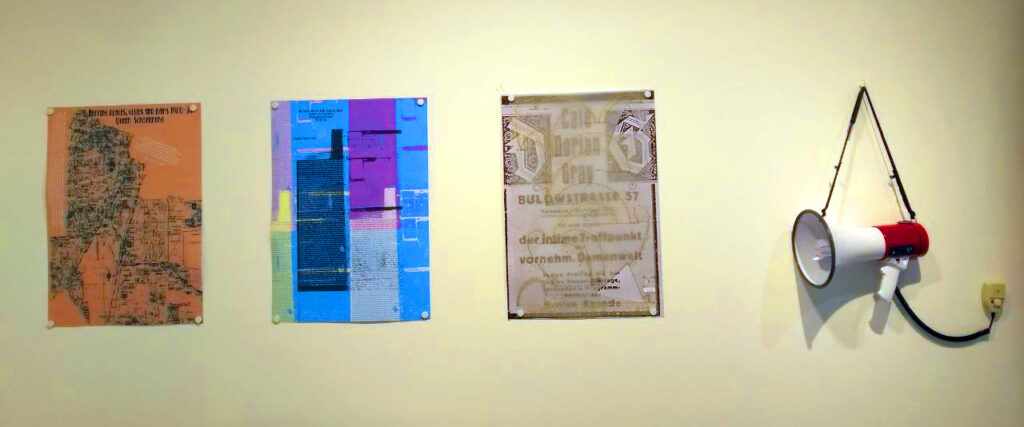
NIGHT INSTALLATION VIEW
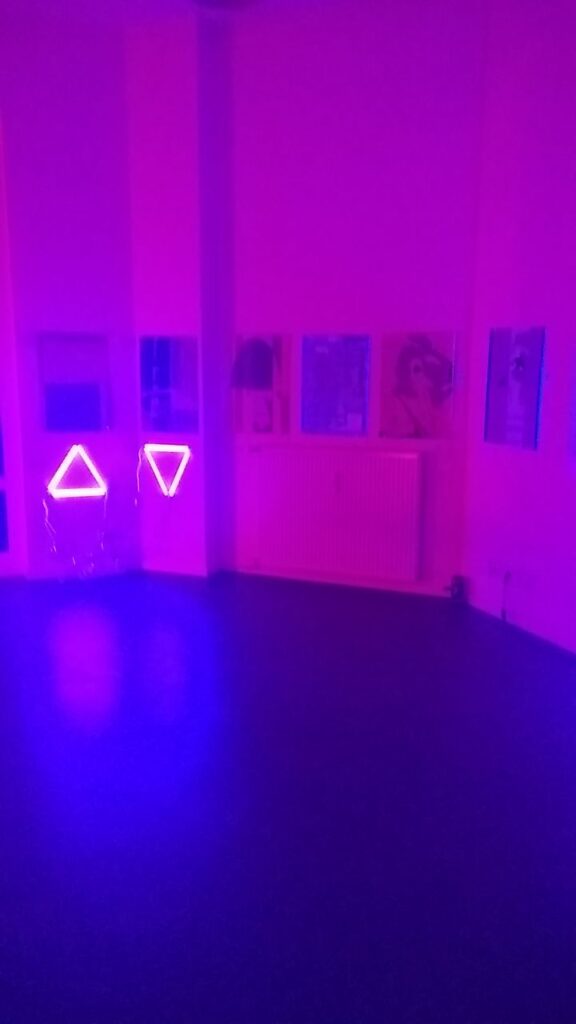
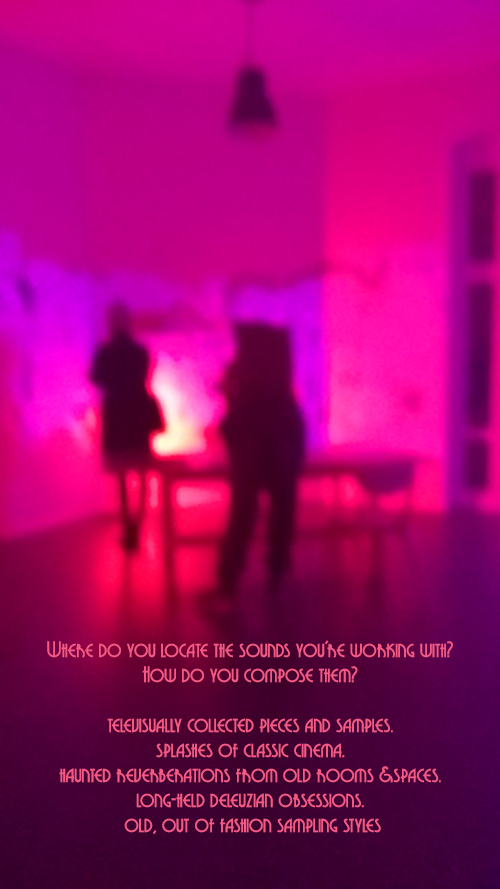
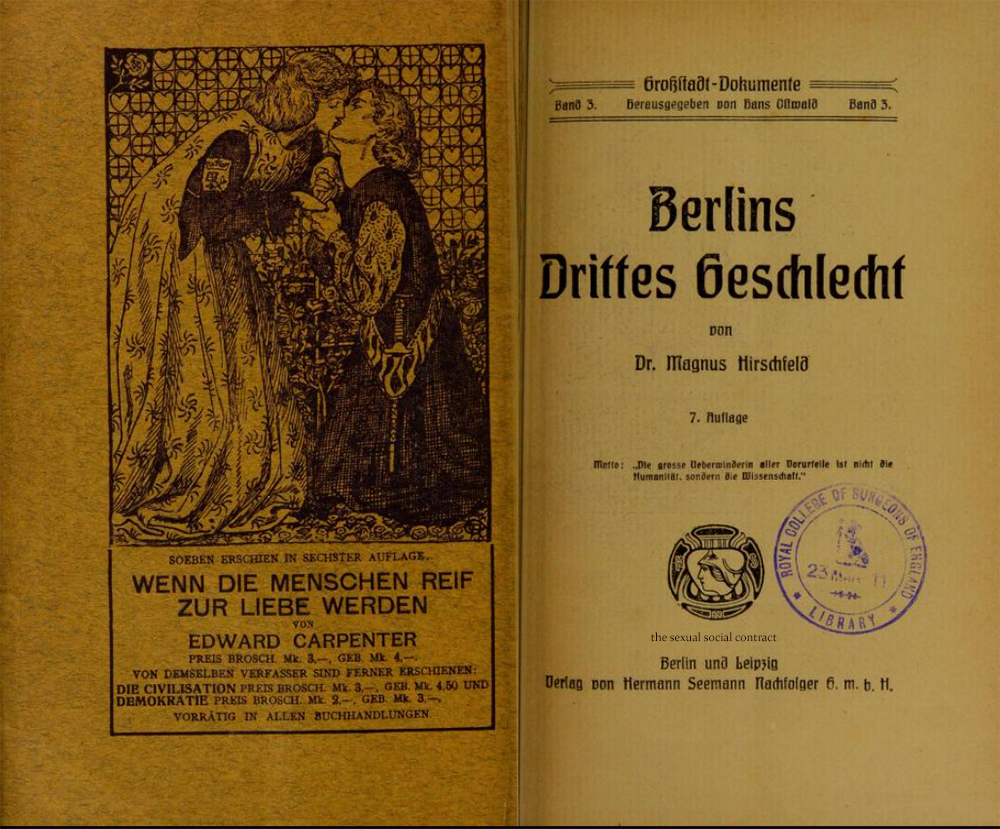
”I am listening and following the sonic trails to the Weimar world”
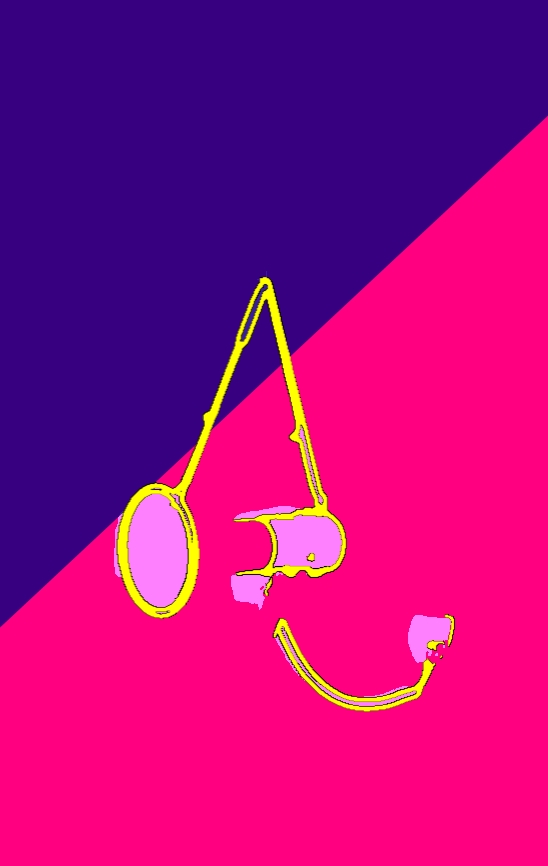
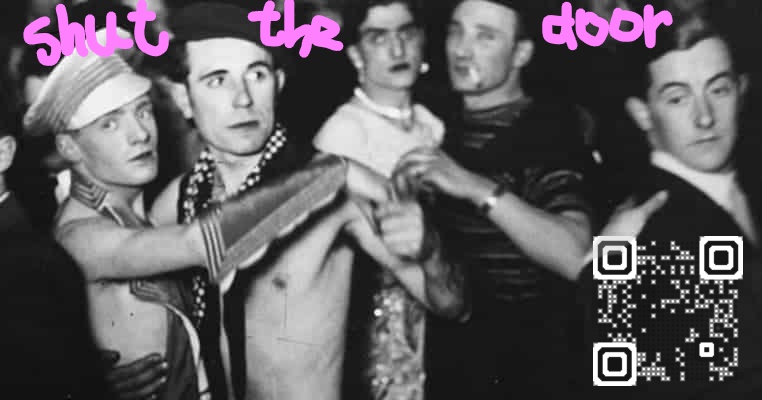
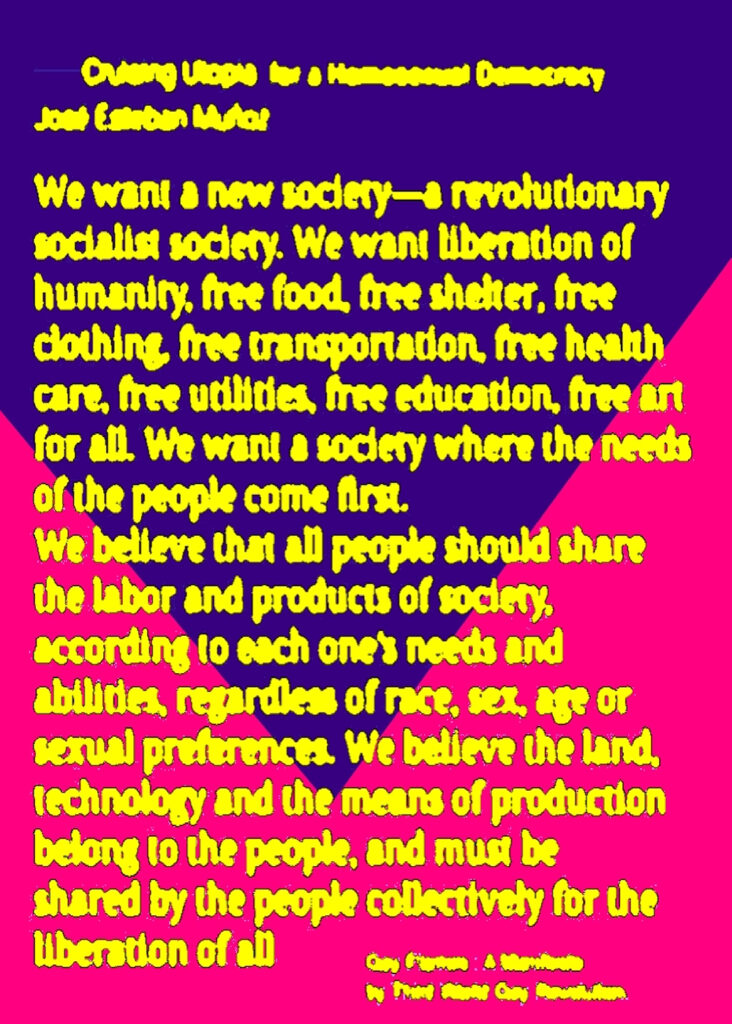

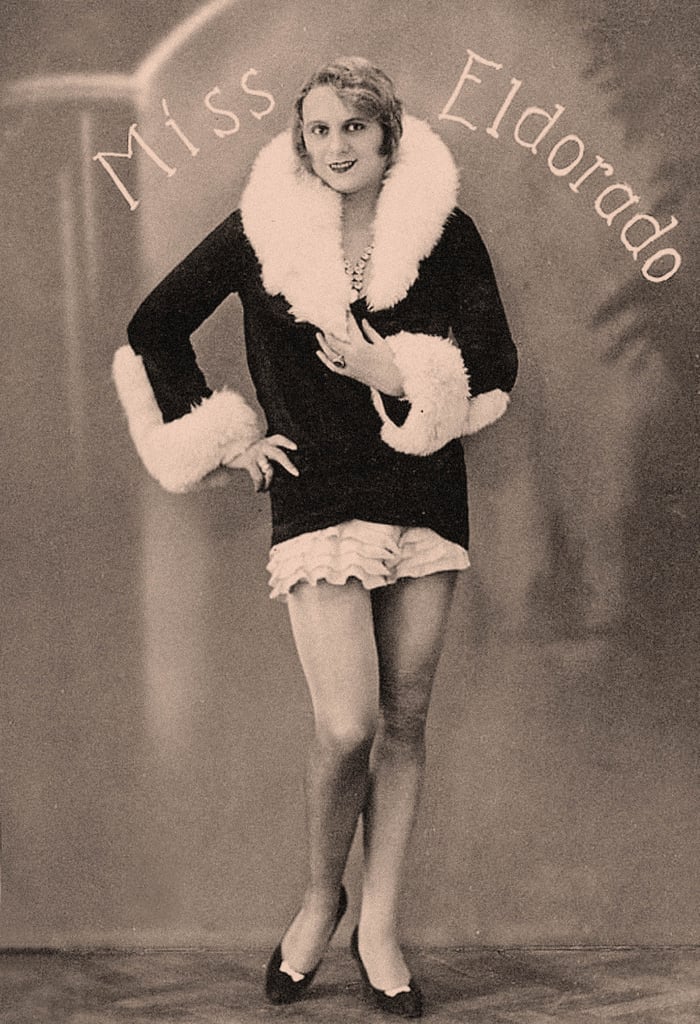
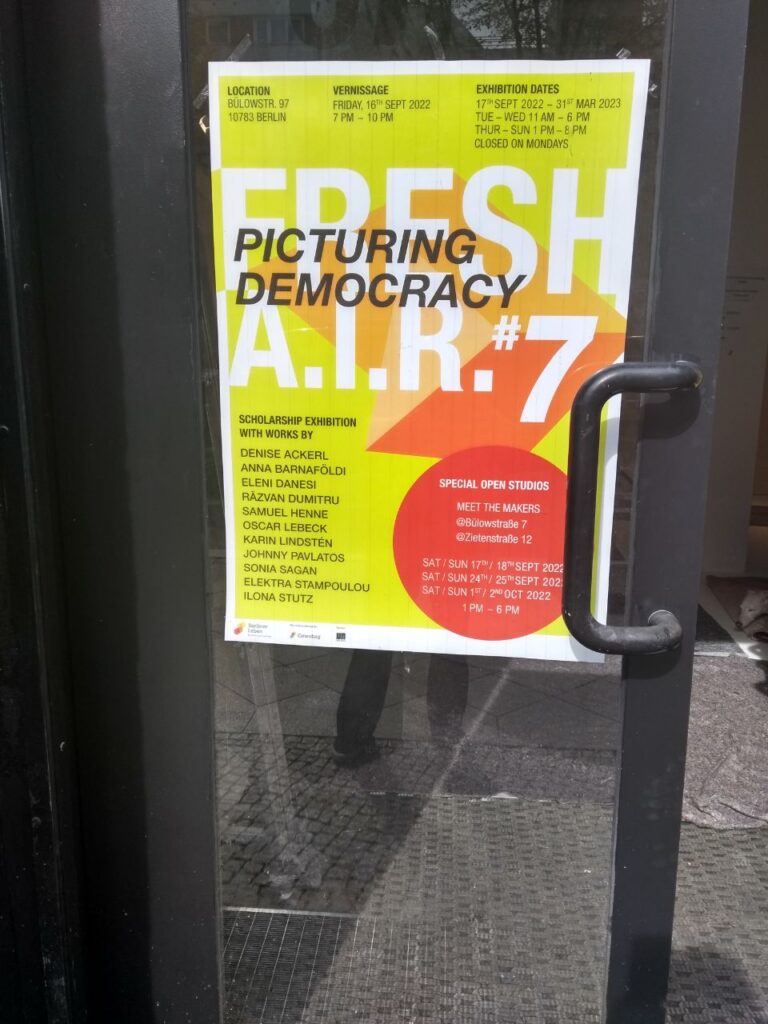
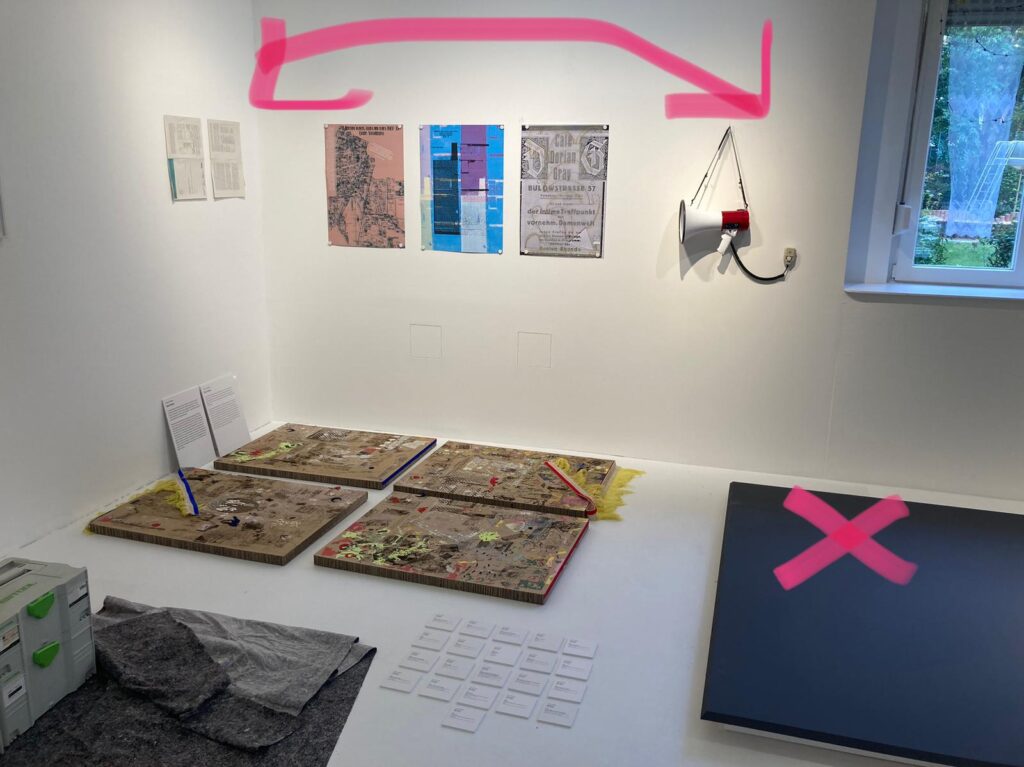


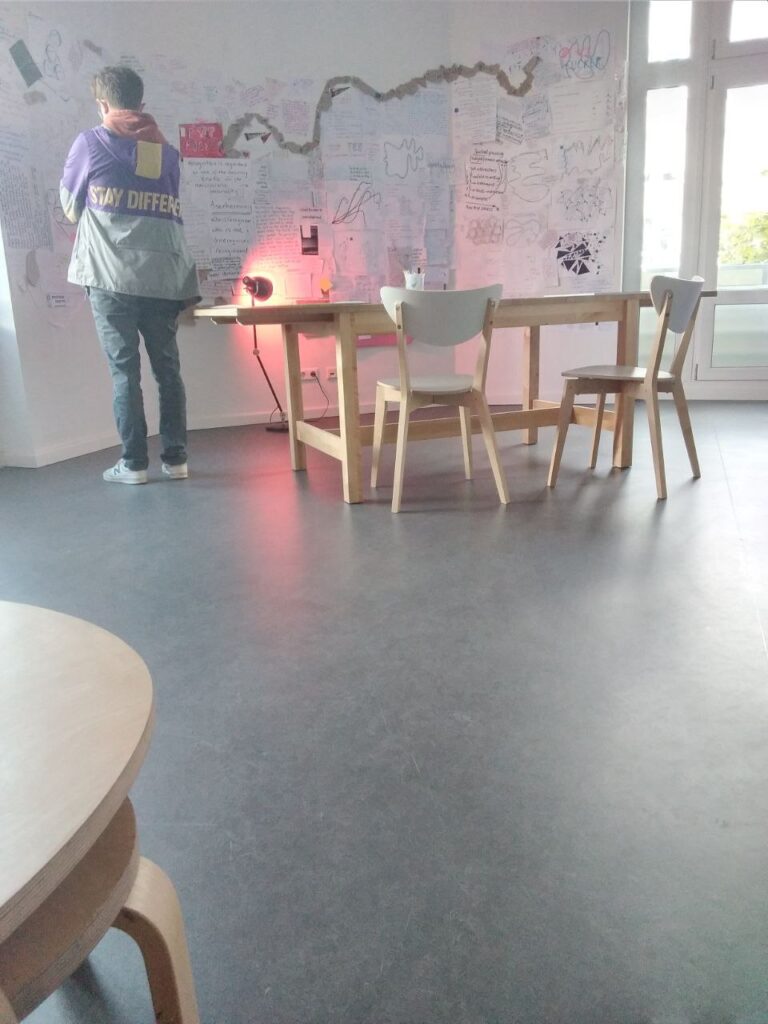
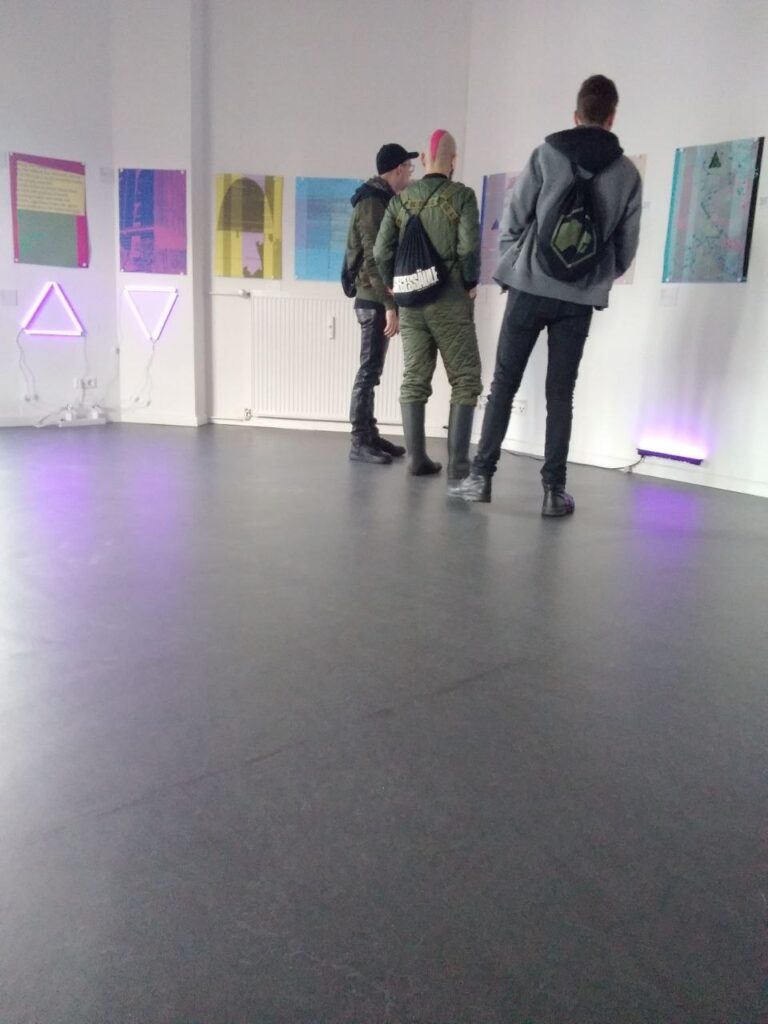
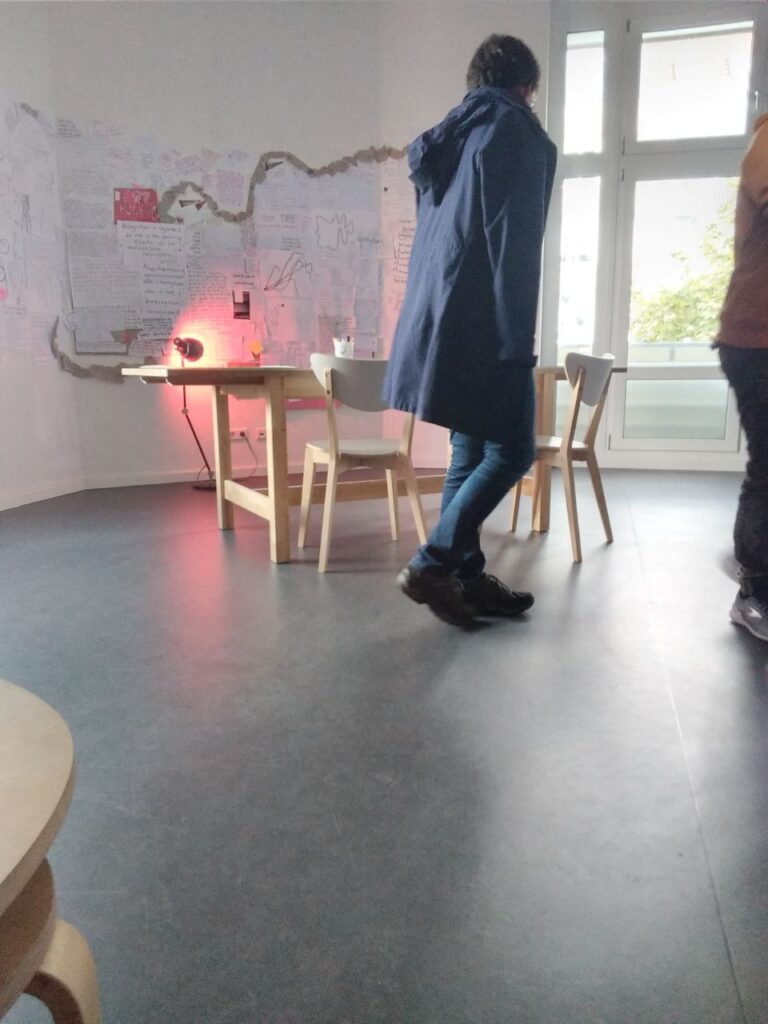
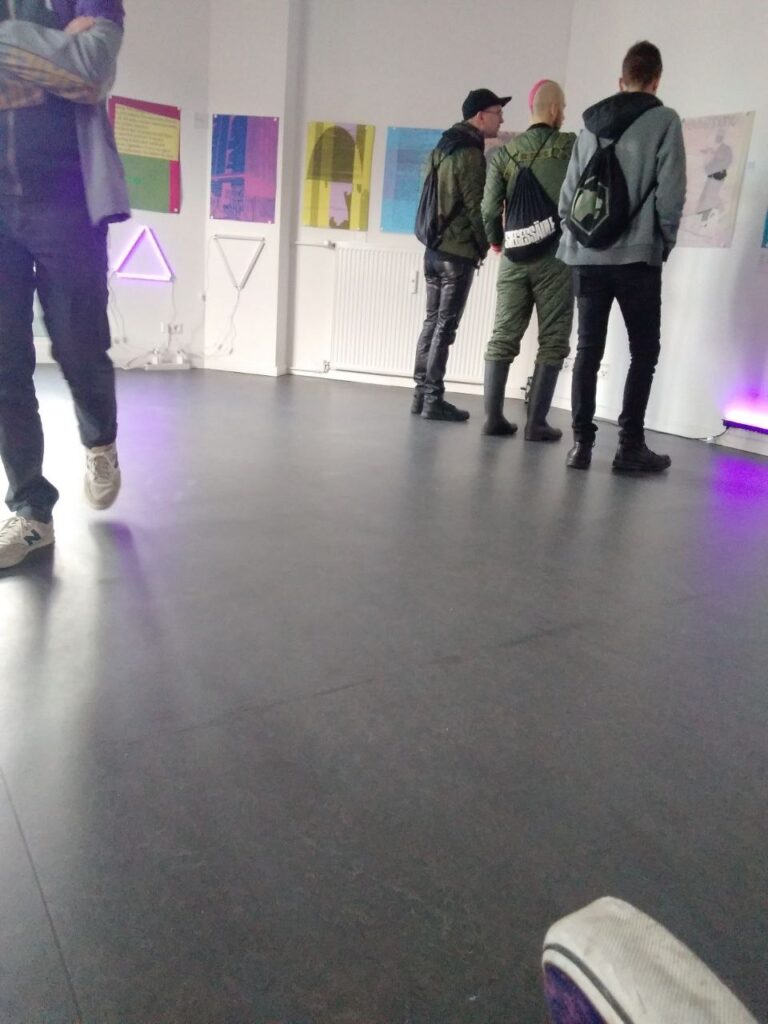
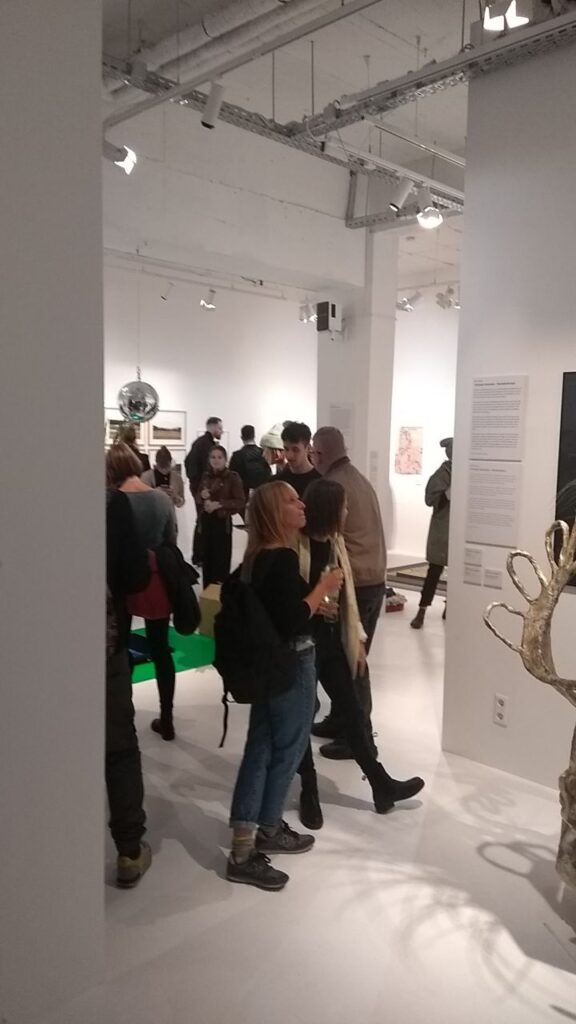

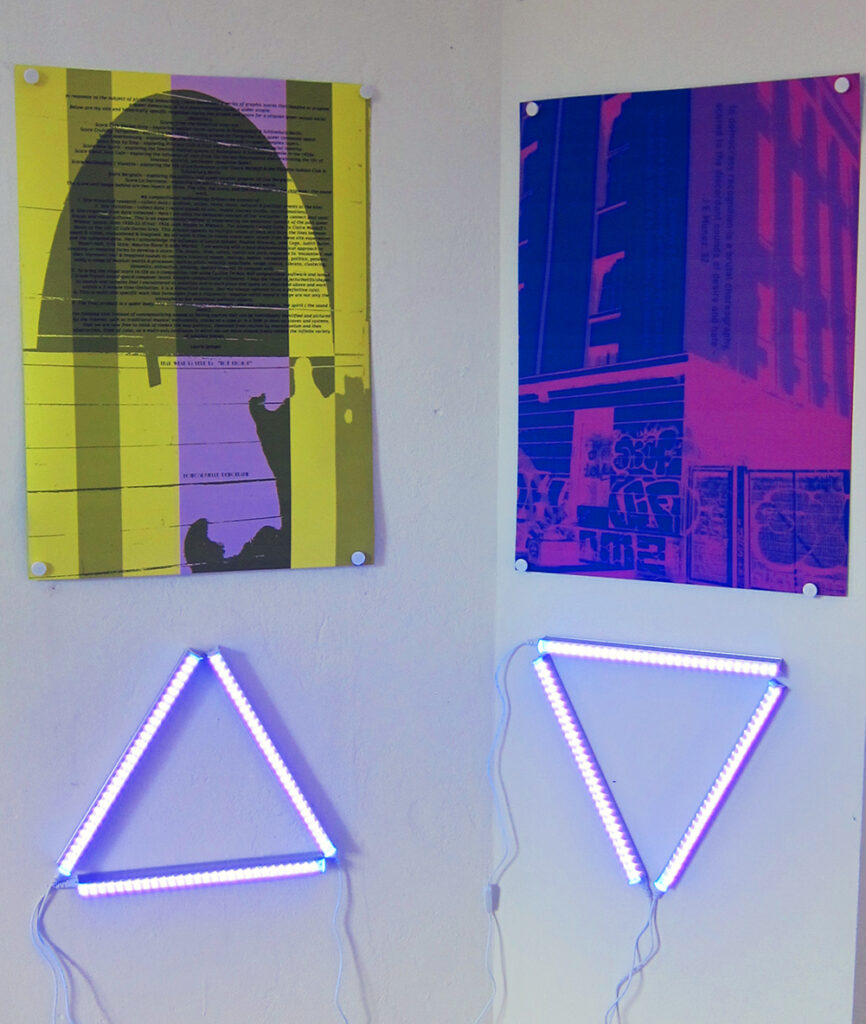
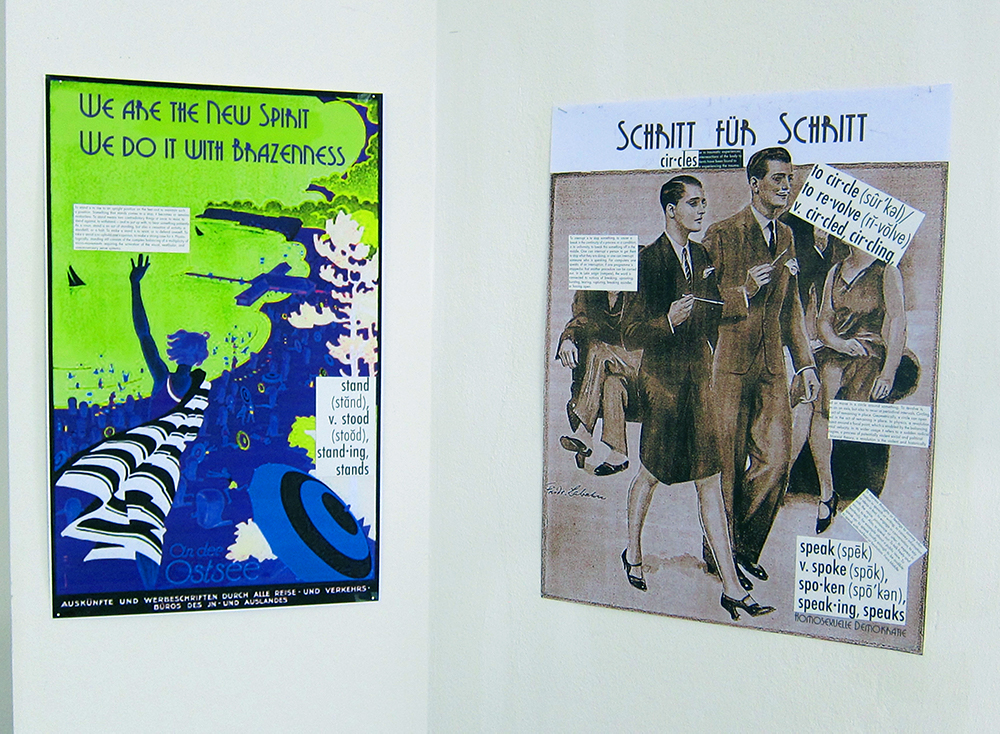

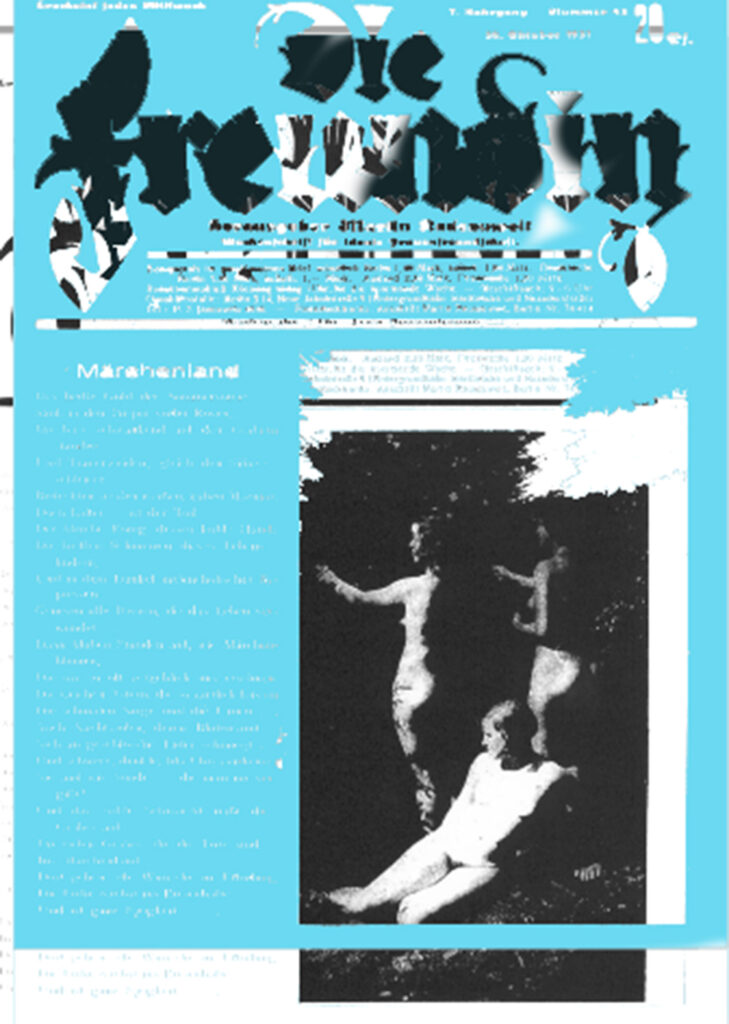
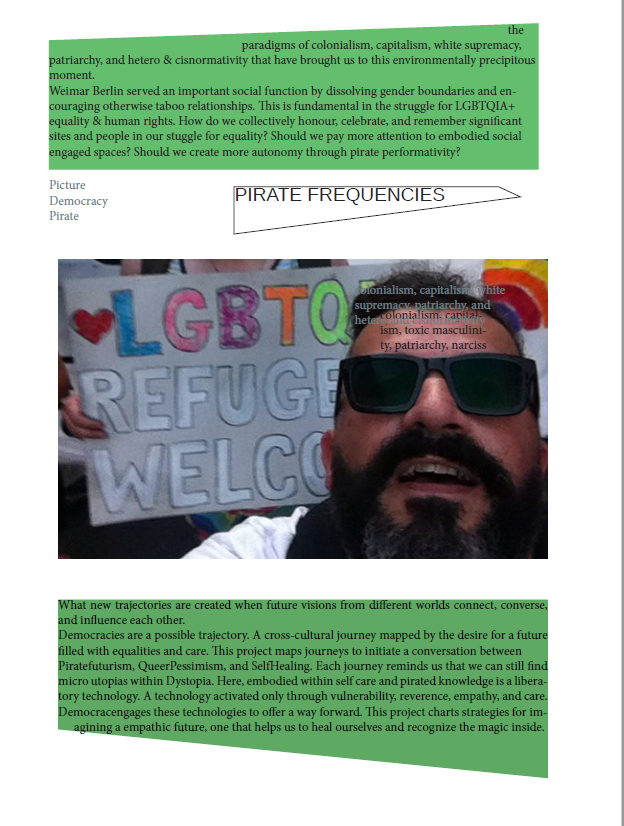

In response to the concept of a homosexual democracy I developed a series of graphic scores that imagine or propose a queer utopia.
Below are my site and historically specific responses laying the ground and space for a utopian queer sexual social democracy.
Scores from the historical sites are :
Score Cafe Dorian Grey – exploring lesbian social cultures in Nollenplatz & Schöneburg Berlin.
Score Cruising Teirgarten – exploring the 1920’s cruising ground at Tiergarten as a queer communal space.
Score Anerkennung – exploring the site of Olala Lesbian club and its queer complex layers.
Score Step by Step – exploring Princess Cafe & Club and its flamboyant queer social identity.
Score New Spirit – exploring the feminist lesbian spaces of Nollenplatz & Schöneburg Berlin in the 1920s.
Score Kleist Jazz Cafe – exploring the influence of Jazz from the Harlem Renaissance and celebrating the life of bisexual activist, performer Josephine Baker.
Score Nationalhof / Violetta – exploring the life of performance artist Claire Waldoff & the Violetta lesbian Club in Schöneburg Berlin.
Score Berghain – exploring the politics and queer utopian grounds of club Berghain.
Score La Garconne – exploring the politics of sex in the queer world.
The scores and image are two layers of three. The site, the score, and the third layer is the response – the sound work.
I am currently working on the compositional responses to the sites. You may hear examples of the composed responses here
My Urban Nation landing page is here
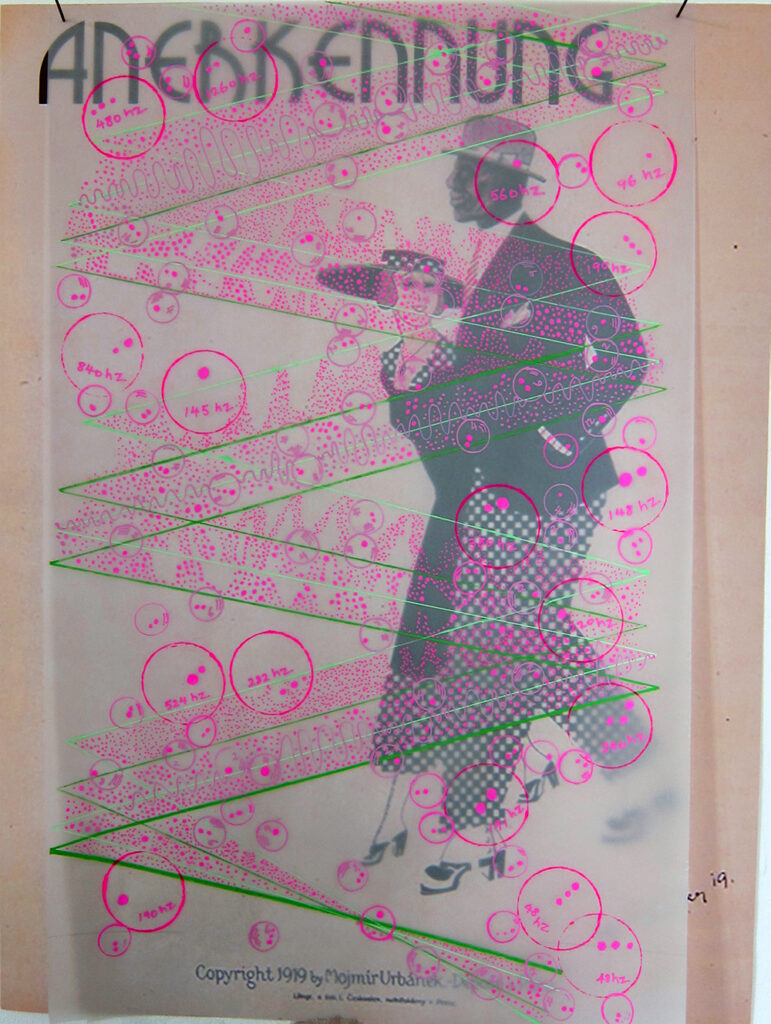


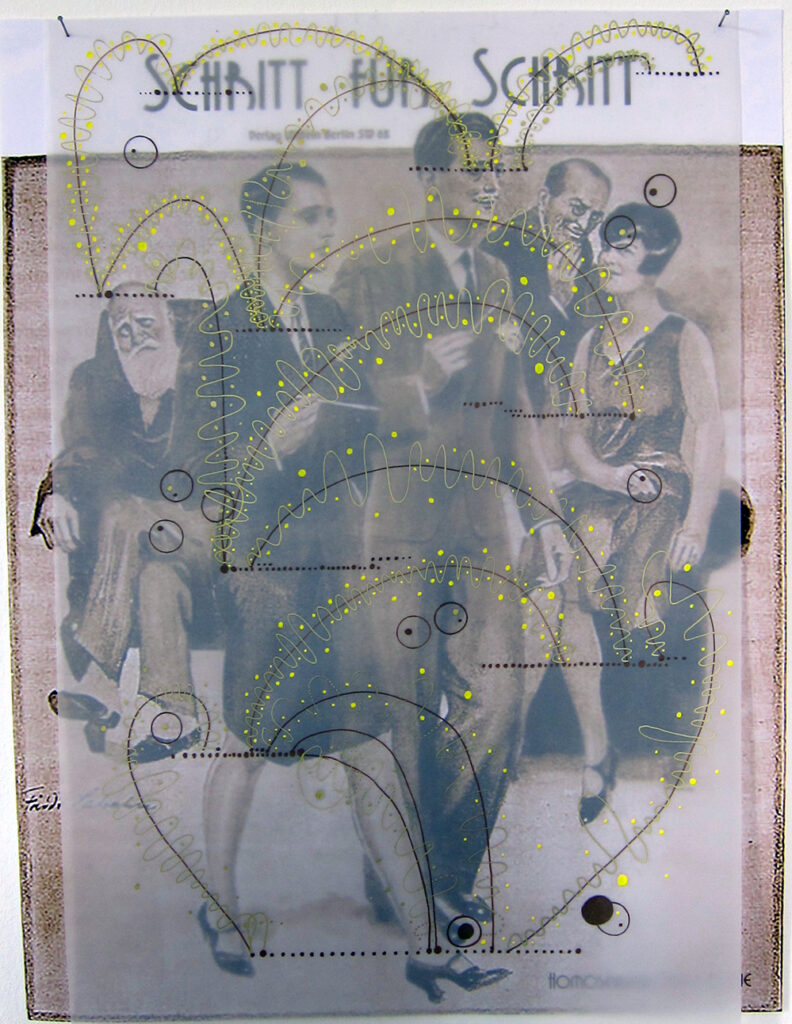
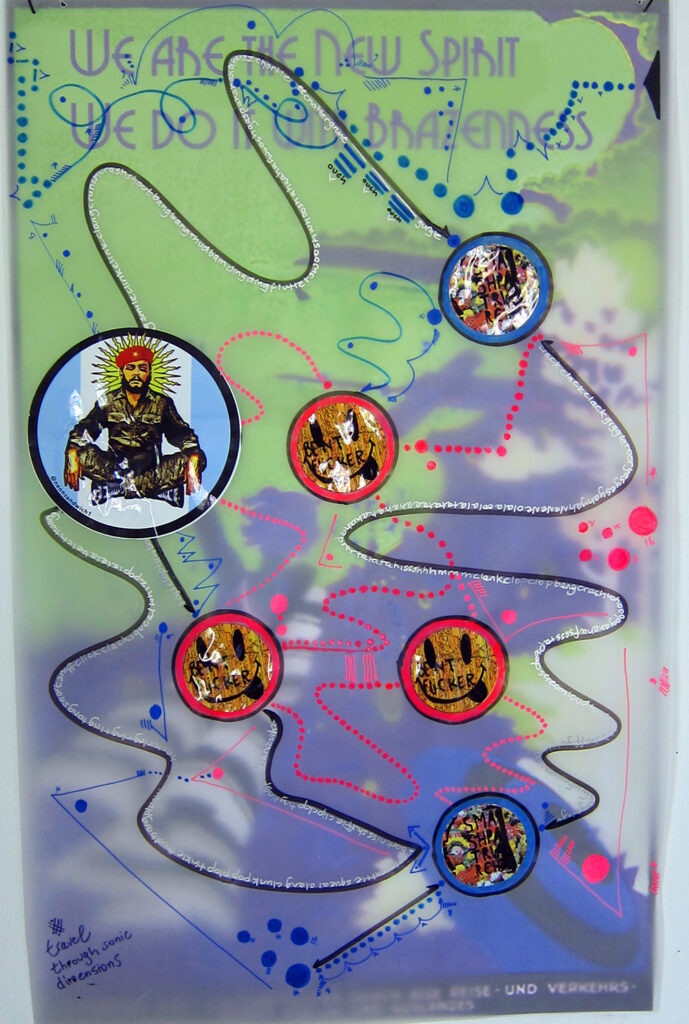
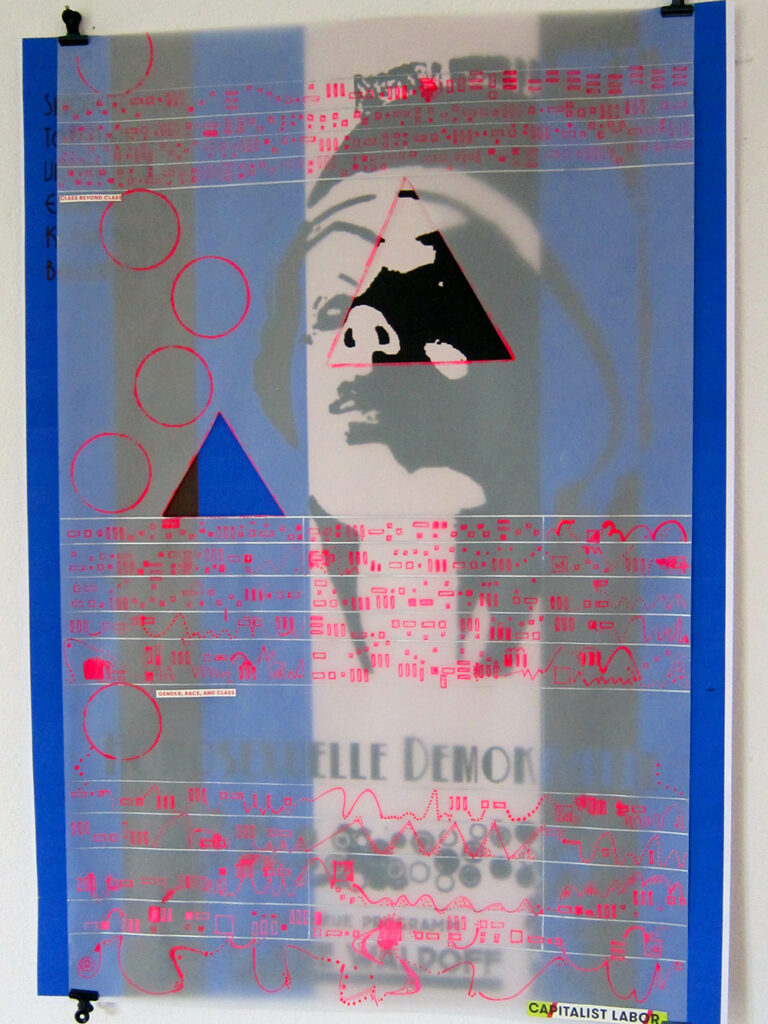

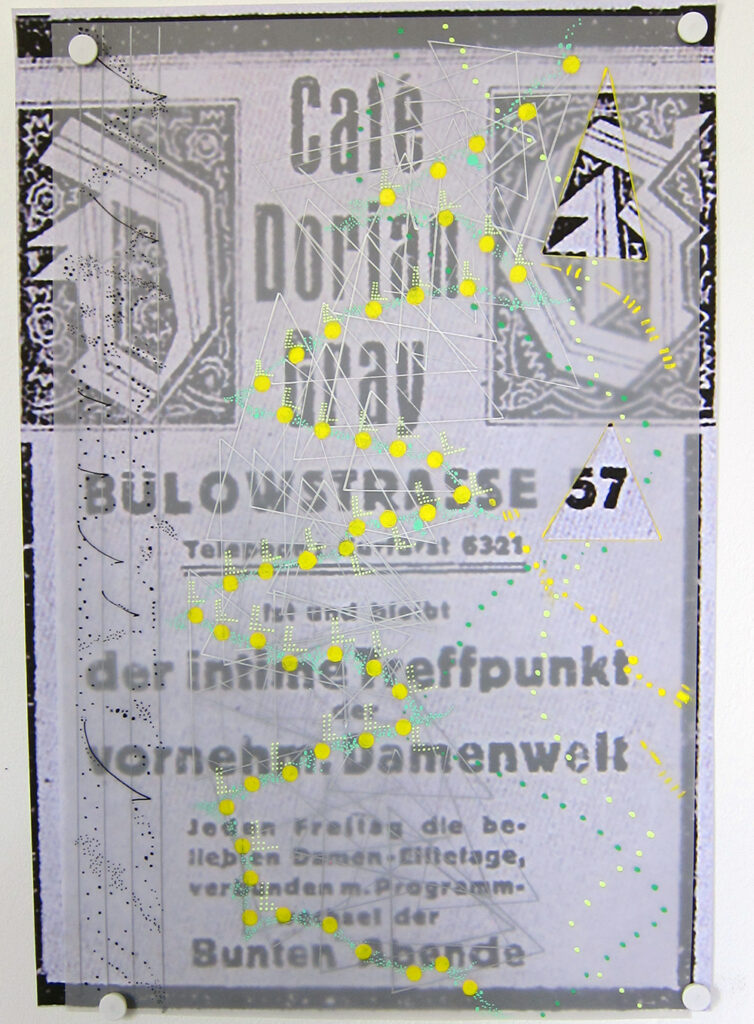


The final product of my project is an 'encounter' with a queer utopia as a critique of democracy. 'Olala Weimar' is an encounter with a queer utopia in that it resists the goal-oriented tautological present. Jose Esteban Munoz said ''It is important not to be content to let failed revolutions be merely finite moments. Instead we should consider them to be the blueprints to a better world that queer utopian aesthetics supply''. Olala Weimar strives to present a cultural supplement that, in its incompleteness, promises another time and place. In my work the transition from image to sound is encountered as a temporal shift and a move to consider the coterminous nature of everyday heteronormative timeframes. The spectres of Queer Schoneburg & Nollendorfplatz mount a critique on the democratic failures of the present. Olala Weimar is not meant as revisionary history or metahistory; it is a critical deployment or a re-imagining of the past for the purpose of engaging the present and imagining another future. In the words of Andy Warhol, ''It is a refusal of the overarching here and now'' The images and sounds I present are deployed as a multiplicity of ephemeral spectres for the purpose of enacting a 'Utopian Queer Encounter'. Sampled 1920's voices, pink notational blocks, swirls of gold & silver, yellow painted curls, a stack of transluscent sheets of paper, & painted pink compositional blocks ''are passports allowing entry to a utopian path, a route that may lead us to heaven or, better yet, to something just like it'' (Munoz J, E: 2009) Each panel in my project represents: 1. Queer life experiences ( place/space/person/image) 2. Queer Bodies ( the score) 3. Queer spirit ( the sound / music). A compositional queer utopia.
